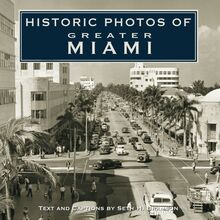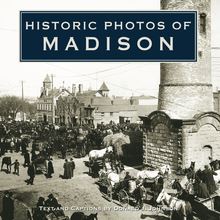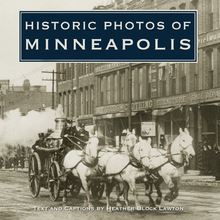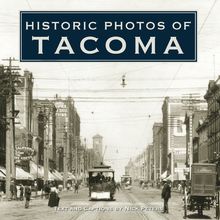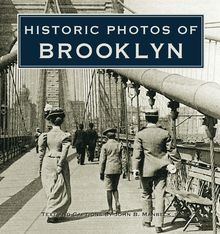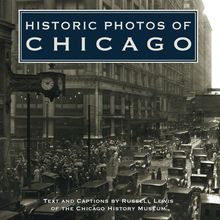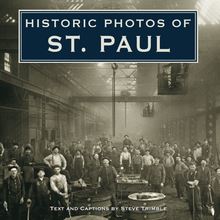Historic Photos of Texas Lawmen , livre ebook
165
pages
English
Ebooks
2008
Vous pourrez modifier la taille du texte de cet ouvrage
Obtenez un accès à la bibliothèque pour le consulter en ligne En savoir plus
Découvre YouScribe en t'inscrivant gratuitement
Découvre YouScribe en t'inscrivant gratuitement
165
pages
English
Ebooks
2008
Vous pourrez modifier la taille du texte de cet ouvrage
Obtenez un accès à la bibliothèque pour le consulter en ligne En savoir plus
Publié par
Date de parution
01 décembre 2008
Nombre de lectures
1
EAN13
9781618586896
Langue
English
Poids de l'ouvrage
1 Mo
The history of law enforcement in the Lone Star State goes back well before photography, dating to Texas’s days as part of the Spanish empire. After that Texas became a province of Mexico and for nearly a decade stood among the nations as an independent republic before becoming the 28th state in the Union in 1845.
Beyond the contribution to law and order made by constables, sheriffs, town marshals, city police officers, and federal lawmen, Texas is the birthplace of a law enforcement institution unique in the world, the legendary Texas Rangers.
Historic Photos of Texas Lawmen features close to 200 images of Texas lawmen, bad men (and a few bad women), assorted characters with a law enforcement connection like the legendary Judge Roy Bean, and shots of the places they did their work—for good or bad. Each photograph has a story to tell.
Some of the images in this volume, coming from the author’s personal collection, are published here for the first time. But all of the images command attention, many as attention-getting as the business end of a Texas Ranger’s .45.
Publié par
Date de parution
01 décembre 2008
Nombre de lectures
1
EAN13
9781618586896
Langue
English
Poids de l'ouvrage
1 Mo
Turner Publishing Company 200 4th Avenue North • Suite 950 Nashville, Tennessee 37219 (615) 255-2665
www.turnerpublishing.com
Historic Photos of Texas Lawmen
Copyright © 2008 Turner Publishing Company
All rights reserved.
This book or any part thereof may not be reproduced or transmitted in any form or by any means, electronic or mechanical, including photocopying, recording, or by any information storage and retrieval system, without permission in writing from the publisher.
Library of Congress Control Number: 2008905362
9781618586896
Printed in the United States of America
08 09 10 11 12 13 14 15—0 9 8 7 6 5 4 3 2 1
Table of Contents
Title Page Copyright Page ACKNOWLEDGMENTS PREFACE CHAPTER ONE - (1849–1879) CHAPTER TWO - (1880–1899) CHAPTER THREE - (1900–1919) CHAPTER FOUR - (1920–1938) NOTES ON THE PHOTOGRAPHS BIBLIOGRAPHY
The commercial and martial heart of San Antonio was Military Plaza, laid out during Spanish colonial times. Militia and Ranger units mustered here for generations. The plaza was also home to the city’s chili queens, pioneers of Tex-Mex food. This image was recorded in 1875.
ACKNOWLEDGMENTS
This volume, Historic Photos of Texas Lawmen, is the result of the cooperation and efforts of many individuals and organizations. It is with great thanks that we acknowledge the valuable contribution of the following for their generous support:
Dallas Public Library Institute of Texan Cultures Library of Congress Mike Cox University of Oklahoma—Western History Collections
With the exception of touching up imperfections caused by the vicissitudes of time and cropping where necessary, the photographs have not been altered in any way. The focus and clarity of many images is limited to the technology of the day and the skill of the photographer who captured them.
PREFACE
The history of Texas law enforcement considerably predates photography. When Spain first began settling what would become the Lone Star state, its soldiers amounted to Texas’ first peace officers. But they handled every problem, from protecting the missions from hostile Indians to maintaining civil order. The first known Texas lawman was 26-year-old Vicente Alvarez Traviesco. He was appointed alguacil (sheriff) of San Antonio de Bexar in 1731.
In 1821, empresario Stephen F. Austin brought 300 American colonists to Texas, by then a Mexican province. Austin tried to pick his immigrants carefully, but even with character references, a few troublemakers made it to Texas. Thomas V. Alley was appointed constable by John Tumlinson on March 5, 1823, and is considered Texas’ first colonial peace officer. His job was to act “in the capacity of constable to summon witnesses and bring offenders to justice.” Later that summer, Austin wrote that he planned to hire ten men to act as rangers for the common defense of the colony. That is considered the genesis of the Texas Rangers, though their job principally involved protecting the settlers from hostile Indians, chiefly the fierce Kawakawa.
When Texas became an independent republic in 1836, its constitution called for the election of a sheriff for each of its 13 original counties as well as “a sufficient number of constables.” Sheriffs were charged with serving civil process, with keeping the peace, quelling and suppressing “all affrays, riots, and unlawful assemblies,” as well as pursuing, apprehending, and jailing “all persons charged with crime.” Often, sheriffs also levied and collected taxes. Though vested with considerable power, being sheriff was not an easy job. In Harrison County, ten men held office during the time of the republic, an average of about one man a year. One sheriff vacated his office when a lynch mob hanged him and burned his tax book. In 1836, President Sam Houston appointed San Jacinto veteran Robert J. Calder as marshal of the new republic. But the job description was different from what the title would suggest. The marshal’s primary duty was to take charge of and oversee the disposition of shipwrecks or prizes seized by the nation’s navy. Calder did not hold that job long before being elected sheriff of Brazoria County, where he served three terms.
Following Galveston’s incorporation in 1839, Leander Westcott became its first marshal. Drawing a $1,500-a-year salary, he received $600 to hire two deputies. The hulk of the Elbe, a storm-wrecked vessel, served as the island city’s first jail. Houston incorporated in 1837 with G. W. Holland elected as its first constable. But the Bayou City, though rowdy, was a much smaller town than bustling Galveston, the republic’s largest city. Houston would not have a city marshal until 1841 when Daniel Busley was appointed. After nearly a decade as a nation, Texas joined the Union in 1845. Its new constitution retained both the office of sheriff and constable at the county level while a state statute allowing for municipal government gave local officials the power to appoint town marshals. When San Antonio incorporated in 1846, the town council appointed James Dunn as the city’s first marshal that January 14. Texas’ new status as the 28th state triggered the 1846-1848 Mexican War. During that war, the first known Texas photograph was taken. Fittingly, the image captured by daguerreotype was a view of the Alamo. In 1851, the capital city got its first full-time marshal. Two years later, the federal government assigned a U.S. Marshal to Austin, former Ranger Ben McCulloch.
For the most part, law and order departed Texas during the Civil War. While the state escaped major battles on its own soil, as the war progressed, civil order steadily deteriorated. Many Texas counties had no sheriff or constables and few cities could keep a marshal employed. During reconstruction, occupying forces handled what passed for law enforcement. On June 8, 1867, Major General Charles Griffin dismissed the entire Galveston police force and appointed 25 of his own hand-picked men, including five blacks. Though unpopular with local residents at the time, that gave Galveston the distinction of having Texas’ first integrated law enforcement agency. Elsewhere in the state, in many counties the offices of constable and sheriff stood vacant for several years during this turbulent period. Even had there been a sufficient number of lawmen, only 82 counties had jails.
Some stability resumed with the creation in 1870 of the Texas State Police, a uniformed force. The following year its 160-plus officers made 3,602 arrests. But the force, tightly controlled by Governor E. J. Davis, operated with a heavy hand. On April 22, 1873, the legislature passed a law abolishing the state law enforcement agency. For a year, law enforcement again rested solely in the hands of sheriffs, constables, and marshals in the more populated towns and cities. But in 1874, the legislature reconstituted the Texas Rangers as the Frontier Battalion, the state’s first permanent Ranger force. Though still primarily occupied with Indian-fighting, for the first time Rangers had statutory authority as law enforcement officers. Two years later, Texans adopted a new state constitution, a document retaining the strong authority accorded county sheriffs since the days of the republic. Every two years, voters got to pick a new sheriff, but some men served numerous terms.
By the 1890s and continuing into early decades of the twentieth century, the larger cities began organizing police departments with appointed or elected chiefs. One of the first cities to switch from having a marshal to a police department headed by a chief was El Paso, where on August 16, 1889, the city’s council appointed T. C. Lyons as chief. Uniformed urban officers still patrolled their beats by foot and horse, but by 1910 most departments began using automobiles and two-wheeled motorcycles.
As Texas grew and became more urbanized, so did its law enforcement. In addition to uniformed beat cops, the larger departments added plainclothes men as detectives. To aid in crime solving, by 1915 most of the larger police departments had started collecting and filing fingerprints and photographing those arrested. When commercial radio stations began going on the air in the early 1920s, as a public service they broadcast police calls. Austin became one of the last major Texas cities to convert from a city marshal’s office to a police department, the change coming in 1928. J. N. Littlepage, the last marshal and first chief, was soon shot to death trying to disarm a man who had just shot five other people. Indeed, law enforcement in Texas did not come without a price. Through 1934, at least 752 law enforcement officers—rangers, sheriffs and their deputies, constables and their deputies, marshals and their deputies, and state and city police officers—gave their lives in the line of duty to help make Texas a safer place to live, raise a family, and work.
— Mike Cox
A view of Del Rio in the late 1890s. Though a small community, being on the Rio Grande, it could be a rough town. Local and state lawmen had to deal with criminals from both sides of the border.
CHAPTER ONE
(1849–1879)
While Texas Rangers—variously serving as volunteers or state-paid militia—contended with hostile Indians the county sheriff reigned as the state’s most authoritative lawman. As opposed to constables and town marshals, a sheriff had full jurisdiction in his county. Sheriffs not only enforced criminal laws, those along the frontier sometimes had to deal with marauding Indians as well. Relying on the venerable common law doctrine of posse commitatus, sheriffs periodically deputized volunteers to lead posses in pursuit of Comanche raiders.
Texas’ more populated towns took care of their own law enforcement, but the sheriff and his men were also available as a backup. The quality of law enforcement in the state peaked at the beginning of the Civil War and deteriorated for a decade. In 1866 under Marshal Isaac C. Lord, Houston became one





